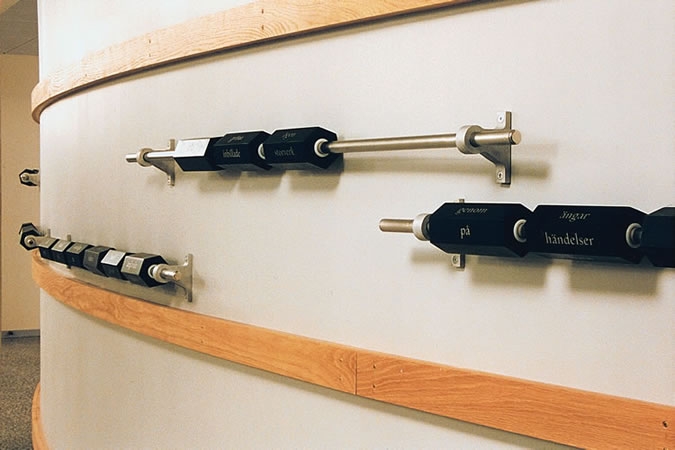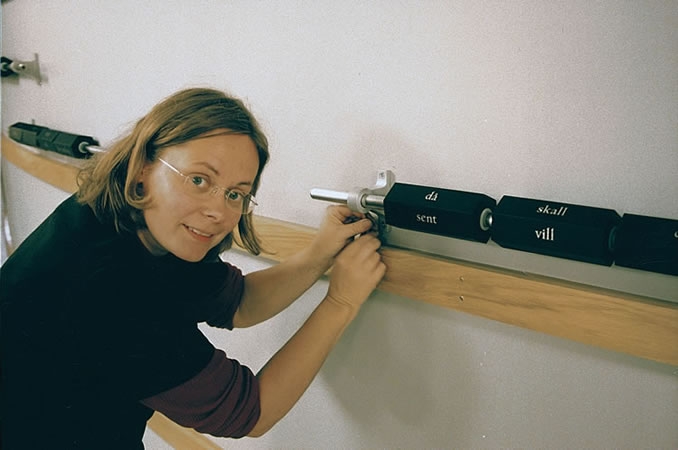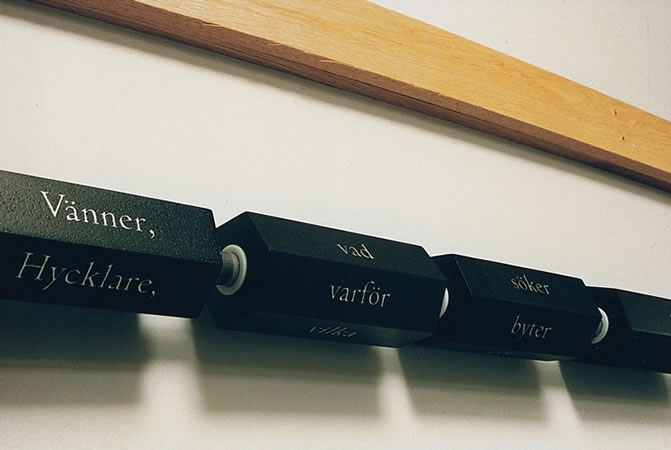Diktverk / Poetry machine
Interactive work for
Högbergsskolan’s gymnasium, Tierp 2003.

Excerpts from the press release
Based on Karin Boye’s poem ”Knowledge”, Maria Lewis has made an interactive work in aluminum and steel, which is about learning and knowledge.
-I took note of the tactile wishes that existed from the school and the architects, says Maria. The work is a natural development of the concept I have worked with for the past 2 years – words and personal stories. Since I myself went to Högbergsskolan, I also wanted to involve something from that time. I read a lot of poetry in high school, and one poem I have carried with me since then is Karin Boye’s ”Knowledge”:
Alla de försiktiga med långa håvar
träffar havets jätteskratt
Vänner, vad söker ni på stranden?
Kunskap kan aldrig fångas,
kan aldrig ägas.
Men om du rak som en droppe
faller i havet att upplösas,
färdig för all förvandling-
då skall du vakna med pärlemorhud
och gröna ögon
på ängar där havets hästar betar
och vara kunskap.
( © Mats Boye 2002 )


Visually, the work brings to mind classic school attributes such as the abacus, pencil and blackboard, and thereby on to the fundamental skills of reading, writing and arithmetic.
The work consists of 12 steel rods with 3-7 hexagonal cylinders strung on each rod, corresponding to the number of words and lines in the above poem. If you turn the cylinders in a certain position, you can read the whole poem, but since each cylinder has another 4 words, you can also create your own sentences and messages. These 4 other words are grammatically related to the starting word from the poem (ex: the sixth word in the first line is ”nets” – the sixth cylinder on the first bar then has, in addition to the word ”nets”, four more words in the noun plural). One side of each cylinder is blank, which provides even more possibilities.
Theoretically, a student could spend his entire high school years creating new combinations of words, although it might not be so popular with teachers …
Technical information: each cylinder is made of solid aluminum, etched so that the words appear in relief, then anodised and lacquered. The rods are made of stainless steel and the brackets are made of aluminum.
The work can be seen during school hours Monday to Friday.